Galapagos Islands Cruising
By Heidi Sarna.
The Galapagos Islands are one of the most coveted and stunning small ship cruising regions in the world thanks to the unique wildlife (from sea lions and seals to turtles, iguanas, penguins and birds of all feathers) and the scientific legacy of Charles Darwin. The naturalist first spent time on the remote Pacific Ocean islands in the 1830s (see below) when his theory on natural selection took seed.
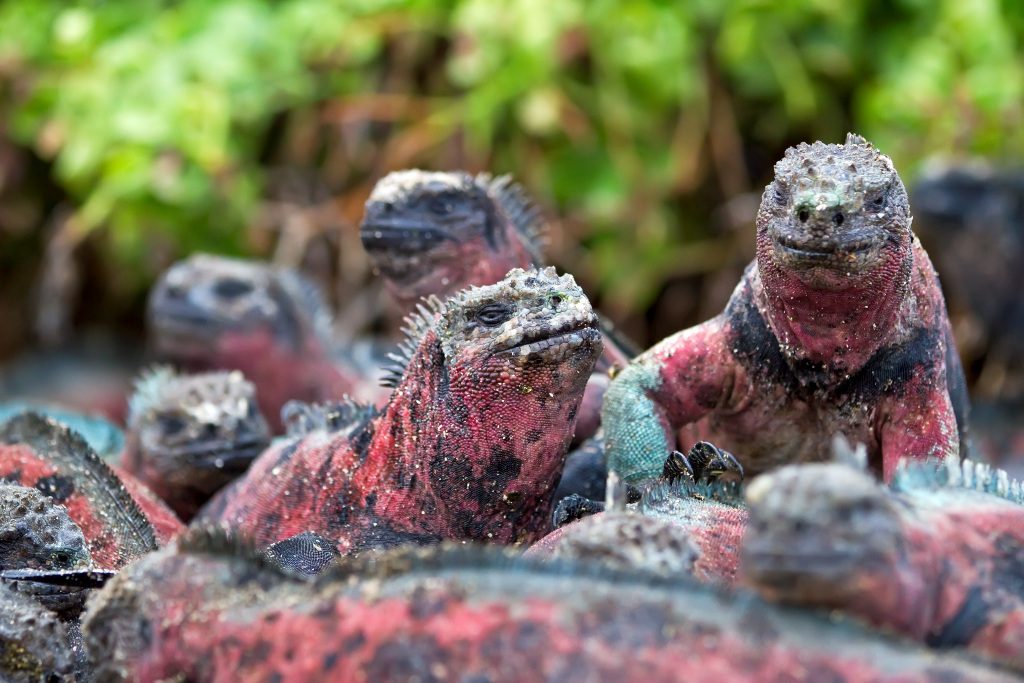
The endemic Galapagos marine iguana. * Photo: Michael S Nolan
A volcanic archipelago of 20 main islands, and 100 or so more islets, the Galapagos Islands are one of the original 12 UNESCO World Heritage sites established in 1978. They represent an incredibly diverse range of habitats — from hauntingly desolate volcanic landscapes to lush green highlands, mangroves, and sandy beaches, both gorgeous arcs of white sand and fascinating black lava swathes.
Off shore, there are coral reefs and lagoons, and diving and snorkeling is excellent in many places. Since 1966, most of the land and surrounding waters — 97 percent to be exact — were set aside by the Ecuadorian government as a national park.
Major ocean currents come together at the Galapagos archipelago, some 600 miles west of Ecuador, creating a rich stew of nutrient rich cool waters from the south (Humboldt Current), warm currents from the north, and a deep cold current from the west, all of which in turn support a vast array of interesting flora and fauna from diverse environments.
“The Galapagos Islands are home to some of the highest levels of endemism (species found nowhere else on earth) anywhere on the planet. About 80% of the land birds you will see, 97% of the reptiles and land mammals, and more than 30% of the plants are endemic. More than 20% of the marine species in Galapagos are found nowhere else on earth. Favorites include the giant Galapagos tortoise, marine iguana, flightless cormorant, and the Galapagos penguin — the only penguin species to be found in the Northern Hemisphere.”
— Galapagos Conservancy
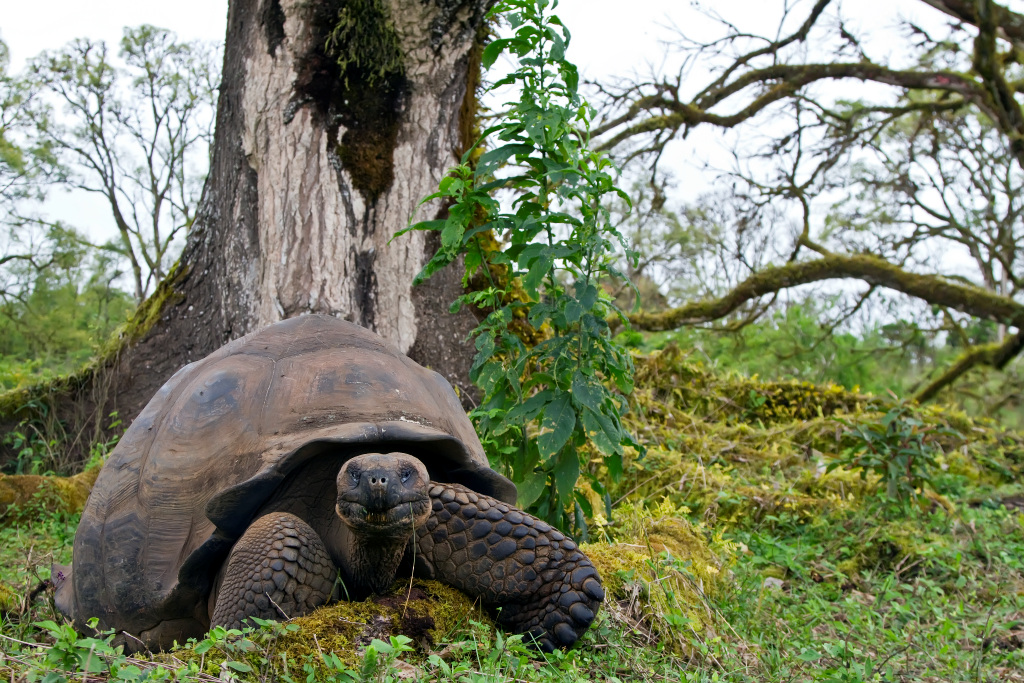
Wild Galapagos giant tortoise munching grass on Santa Cruz Island, on a Lindblad Expeditions trip. * Photo: Michael S. Nolan
To try and keep the islands as untainted by tourism as possible, Ecuador regulates the number and size of ships (100 passengers or less) permitted to cruise in the waters of the Galapagos Islands, and also limits the number of times a particular ship can visit an island (once every 14 days).
Cruising between islands usually takes place at night, so daytime is spent on shore or in the water on excursions. Naturalists guides, all licensed with the Galapagos National Park, lead excursions, give talks on board and mingle with passengers.
Ships in the Galapagos are equipped with Zodiacs (small inflatable boats) to take small groups of passengers to shore, along scenic coastlines and on snorkeling expeditions. Snorkeling equipment is routinely provided and diving gear can often be arranged. Some ships, like the Lindblad boats, have underwater cameras shooting videos that are then shown in the ships’ lounges. Some ships also have kayaks for use on guided jaunts.
Time on board is spent listening to lectures from the naturalists and standing on the decks chatting with other passengers, officers and crew as you keep an eye out for wildlife. Before dinner passengers usually gather in the lounge for a drink to discuss the day and what’s in store for tomorrow.
It’s just under a two-hour flight between Guayaquil on the Ecuadorian mainland coast and the airport on the island of Baltra, next to Santa Cruz, or the airport on San Cristobal Island. Cruises can be as short as three or four nights, are as long as two weeks, though most are 7 to 10 nights, not including the one- to two-night hotel stay in Guayaquil or Quito on either end that is necessary to make most flight connections.
SUBSCRIBE to QuirkyCruise.com for small-ship cruise reviews, updates & special offers.
Galapagos Islands Cruising Ports of Call
Here are highlights from a handful of islands; most have multiple sights on shore and off.
Bartolome. It’s considered the most visited and most photographed island in the Galapagos, namely for Pinnacle Rock — a cool rock formation you can ogle from a nearby bluff. The picturesque beach below it is popular for snorkeling and swimming; keep your eyes open for Galapagos penguins, herons, Galapagos hawks, green sea turtles, spotted eagle rays, and white- and black-tipped sharks
Espanola. This is the island for seeing Albatross — we’re talking 25,000 to 30,000 Waved Albatross doing their goofy mating dances between April and December. Many other bird species nest here as well, including blue-footed and Nazca boobies. Flocks of tamed Darwin’s finches and Española mockingbirds sometimes land on tourists’ heads and shoulders. Bright red and green marine iguanas are also part of the show. On the beach at Gardner Bay, adorable sea lion pups congregate on the beach while mom goes fishing.
Fernandina. The archipelago’s youngest and most volcanically active island, here you can see marine iguanas and flightless cormorants, as well as penguins, sea lions and Sally Lightfoot crabs. The lava cactus growing on young lava is another cool site. Divers off shore will be thrilled to spot sea horses, sea turtles, and many types of sharks and rays.
Floreana. There’s so much to photograph on this island, from pink Galapagos flamingoes to pintail ducks, stilts, large-billed flycatchers, several species of finch. Devil’s Crown is the remnants of a volcanic crater that pokes up through the water of shore; strong swimmers and confident snorkelers can jump off zodiacs right into the crown for a close up look at sea lions, king angel fish, balloon fish, hawkfish, yellowtail grunts, tiger snake eels, white-tipped sharks, eagle rays, wrasses, hammerhead sharks, and sea turtles. Birds also like Devil’s Crown, from boobies to pelicans, and frigatebirds.
Isabela. The largest of all the islands at about 75 miles long, Isabela has several active volcanoes, including 5,600-foot-high Wolf Volcano, the highest point in the archipelago. The island has more wild tortoises than all the other islands combined, according to the Galapagos Conservancy, and the west coast of Isabela is considered the best place to see whales, from humpbacks to sperms, sei, minkes and orcas.
The island is also home to birds of all kinds, from flamingoes to paint-billed crakes, white-cheeked pintails, common gallinules, flightless cormorants, penguins, pelicans and lava herons, plus land birds the likes of finches, hawks, yellow warblers, large-billed flycatchers and occasionally the woodpecker finch. There are also a handful of excellent dive sites offshore.
Rabida. This small, arid island is home to scads of marine iguanas and sea lions, as well as brown pelicans, and blue-footed and nazca boobies. Large pink flamingos, pintail ducks and common stilts feed in the shallow water of a saltwater lagoon, while finches, Galapagos doves, yellow warblers, and mockingbirds dart around.
San Cristobal. The island where Darwin first went ashore in 1835, San Cristobal is the second most populated island in the Galapagos with about 6,000 permanent residents and it also has an airport with daily flights to the mainland. Otherwise, the island is a wonderland of natural sites including Punta Pitt, a dramatic bluff with great views of a sea lion colony and the communal nesting place of red-footed, blue-footed and Nazca boobie birds.
The coral sand beach at the base of the gorgeous Cerro Brujo tuff cone is popular for swimming and snorkeling and Kicker Rocker is a spectacular volcanic offshore rock formation where blue-footed boobies, Nazca boobies, frigatebirds, and sea lions roam.
Santa Cruz. The most populated of the Galapagos, Santa Cruz is the islands’ tourism hub thanks to the airport that most tourists go in and out of on neighboring Baltra Island, a 10-minute ferry ride away. Top sites on Santa Cruz include the Charles Darwin Research Station and the Fausto Llerena Tortoise Center to have a look at the many different species, from hatchlings to juveniles to old timers. (Thousands of giant tortoises lived on the islands until the 19th century when sailors and pirates began to kill them for food and oil.)
Other island highlights include: Cerro Crocker, the highest point on the island with great views; Las Bachas beach, a major nesting site for sea turtles; South Plaza islet for sea lions, land iguanas and lots of seabirds; and offshore dive sites teeming with sea lions, sea turtles, sharks, eels, manta rays, eagle rays, fur seals and lots of fish.
Santiago. Once the scene of thriving salt mines in the early to mid 20th century, today there are several great visitors’ sights, including James Bay where you can see nesting sea turtles, flamingoes, Galapagos hawks, white-cheeked pintail ducks and fur seals. In Sullivan Bay, you can walk across a recent (late 19th century) lava flow and check out the interesting volcanic cones and formations.
There is also an excellent snorkeling site in the channel between the shoreline and a small islet called Chinese Hat, where you can take a gander at sea lions, penguins, rays and sharks.
For more details, the Galapagos Conservancy is a great source.
When to Go
Galapagos Islands cruises are offered year-round. The peak season is summer — mid-June though early September — and mid-December though Mid-January, when prices are highest and islands are the busiest.
December through May is warmer (mid 70s to mid 80s Fahrenheit), sunnier and rainier (expect a daily afternoon shower). Since temperatures are warmer both in and out of the water, and there’s little wind, snorkeling is appealing, except that there are fewer fish swimming around. It’s breeding season for land birds, sea turtles and sea lions (in March and April, you can see adorable newborn seal pups crawling on the beaches), so you can watch mating rituals and ooh and aah over babies.
June through November is cooler (low 70s Fahrenheit) and windy (seas can be rougher), but it rarely rains during these months. The Humboldt Current is to thank, it reaches the Galápagos from the south and brings colder water and colder weather with it. BUT it also brings water rich in nutrients and plankton, so there are more fish in the sea at this time of year (divers and snorkelers love it), and because there are more fish, there are lots of seabirds fishing, from Albatrosses to Penguins, Blue-footed Boobies and owls.
Company Reviews
We’ve written cruise line profiles of a number of major small-ship companies cruising in the Galapagos — AdventureSmith Explorations, Aqua Expeditions, Celebrity Cruises, Ecoventura, G-Adventures, GreenTracks, Lindblad Expeditions, Silversea Expeditions, Tauck, Un-Cruise Adventures, Zegrahm Expeditions and Quasar Expeditions — with a reviews of Kleintours of Ecuador and Latin Trails coming soon.
And here we offer a brief round-up of even more companies, which may be tour operators and/or travel agencies, that sell Galapagos cruises and can help with other aspects of trip planning. They may charter entire ships or have just a cabin or two allotted to them, it all depends; nevertheless, it doesn’t affect the experience for you.
All of the following companies are members of the International Galapagos Tour Operators Association (IGTOA) and are required to be insured and bonded.
Eclipse Travel
This Australia and New Zealand owned and operated tour operator specializes in travel to South America, Central America and the Poles. In the Galapagos Islands, they offer four different trip levels for every wallet — budget, standard, superior and deluxe.
Contact: Level 6, 115 Pitt St, Sydney, NSW 2000 Australia USA; (+61) 2 8199 9465 and www.eclipsetravel.com.au.
Journeys International
Founded in 1978 by Will and Joan Weber, former Peace Corps volunteers, teachers and conservationists, this family-owned business was one of the original “eco tourism” companies before it was ever the ubiquitous term it is today. Journeys International continues to thrive on personal, small-scale encounters with interesting places around the world, including the Galapagos Islands.
Most cruises are 7 nights long and many are on the 20-passenger Letty, Origin or Theory, or aboard the legendary Grace, ships also used by other companies. During the summer months of June, July and August, plus December, the trio offers special family-friendly cruises for families with children ages 5 or 6 and older.
Contact: 107 Aprill Drive #3, Ann Arbor, Michigan 48103 USA; 734-665-4407 and www.journeys-intl.com.
Mountain Travel Sobek
This travel company is the merger of two adventure outfits — Mountain Travel that formed in 1969 and a year later organized its first Galapagos cruise (for the Sierra Club, and the first North American company to go there) and Sobek Expeditions, which was founded in 1973. The combined company has continued to offer adventurous travel ever since, including groundbreaking hiking, rafting, skiing, kayaking and sailing trips over the years in China, Zimbabwe, Pakistan, Libya, Ethiopia and other places.
Its Galapagos cruises are aboard small ships including the 16-passenger Galaxy — none of the ships used carries more than 16 passengers.
Contact: 1266 66th St, Suite 4, Emeryville, California 94608-1117 USA; 510-594-6000 and www.mtsobek.com.
Natural Habitat Adventures
In business for more than 30 years, this company offers Galapagos trips focused on families, photography, and hiking & kayaking, and offers classic general interest trips as well. Choose from the 20-passenger expedition yacht Letty with teak wood cabins (including a pair of triple cabins ideal for families) and interiors; the 16-passenger motor catamaran Athala II with four balcony cabins and also a hot tub; and the new 20-passenger luxury yacht Origin, with two triple cabins, a small gym, hot tub and open bar. Some cruises are also offered aboard Lindblad’s 48-passenger National Geographic Islander.
All cabins on the three vessels are en suite and each boat carries two naturalist guides on board for intimate excursions with no more than 8 to 10 passengers per guide. Natural Habitat Adventures is an official travel partner of the World Wildlife Fund (WWF), which gives them an edge in itinerary planning.
Contact: PO Box 3065, Boulder, Colorado 80307 USA; 303-449-3711, www.nathab.com.
Wilderness Travel
Wilderness Travel, a founding member of IGTOA, operates active adventures that are hiking, wildlife and/or culture focused in more than 75 countries worldwide and has been offering small-ship cruises in the Galapagos since the company was founded in 1978. Founder and president Bill Abbott says that almost 70% of their clients have traveled with them before or are direct referrals from those who have.
Their 8- to 17-night Galapagos trips, which include two night hotel nights in Guayaquil, are aboard the romantic 16-passenger square-rigged sailing yacht Mary Anne, the 12-passenger yacht Passion with a hot tub and two suites with a marble-clad bathrooms, and the 12-passenger yacht Reina Silvia. Wilderness offers extensions to the Ecuadorian highlands, Peru/Machu Picchu and the Amazon.
Contact: 1102 Ninth Street, Berkeley, California 94710 USA; 510-558-2488, www.wildernesstravel.com.
Charles Darwin in More Detail
An excerpt from Galapagos: Both Sides of the Coin, by Pete Oxford and Graham Watkins (Imagine Publishing, 2009).
Of all the scientists to visit the Galapagos Islands, Charles Darwin has had the single greatest influence. Darwin was born on February 12, 1809, in Shrewsbury, England. In 1831, having studied medicine at Edinburgh and having spent time studying for Holy Orders at Cambridge, with nudging from Professor Henslow, Darwin convinced Captain Robert FitzRoy to let him join him aboard the H. M. S. Beagle as the ship’s naturalist.
FitzRoy was taking the Beagle on a charting voyage around South America. On Sept 15, 1835 on the return route across the Pacific, the Beagle arrived in the Galapagos Islands. Darwin disembarked on San Cristóbal (Sept 17-22), Floreana (Sept 24-27), Isabela (Sept 29-Oct 2) and Santiago (Oct 8-17). FitzRoy and his officers developed updated charts of the archipelago, while Darwin collected geological and biological specimens on the islands.
At the time of his visit, Darwin had not yet developed the ideas he presented later; it was only in retrospect that he realized the full significance of the differences among Galapagos species. Noteworthy about his visit were his observations of three different species of Galapagos mockingbirds on different islands and what the acting governor, Englishman Nicholas Lawson, told him about the differences among the giant tortoises from different islands.
While in the archipelago, Darwin focused as much on geology as on biology, collecting many geological specimens. Later, when he grasped the significance of the differences among the mockingbirds and tortoises, he resorted to the collections of his crewmates to look for inter-island variations among birds, plants, and other species, having failed to label all the specimens in his own collections, by island.
On the Origin of Species (published in 1859) changed the way we look at and understand the world. The book focused on the transmutations of species and explained, in detail, the mechanism that underlies evolutionary change. In On the Origin of Species, Darwin countered the predominant view of the time by presenting observations on the high number of endemic species found in the islands, the close interrelatedness of these species, and the absence of some groups of species. All of these observations ran contrary to the reasoning behind “Special Creation,” then the dominant explanation of the distribution of species.
Critically, Darwin suggested a highly logical alternative mechanism to explain the distribution and types of species, which he termed “natural selection.” His argument was that if individuals vary with respect to a particular trait and if these variants have a different likelihood of surviving to the next generation, then, in the future, there will be more of those with the variant more likely to survive.
In On the Origin of Species, Charles Darwin offered a compelling answer to the outstanding question of biology, which was “how life on earth had evolved.” The book was, as Darwin commented, “one long argument” that stemmed from his five-week visit to the Galapagos Islands and attempted to include all life on earth. On the Origin of Species linked Darwin and Galapagos inextricably and changed the islands forever.
Machu Picchu
If you’re going to the Galapagos Islands, you may want to consider a trip to Machu Picchu, many lines offer add-ons to the amazing Inca site in the Andes Mountains of Peru. Most trips are 4 to 8 days, allowing for a day or two to acclimatize in historic Cusco, the ancient capital of the Inca Empire at about 11,800 feet above sea level, before hiking, training or helicoptering to the stunning remains of the 15th-century Machu Picchu, which are set dramatically on a mountain ridge above the Urubamba River some 50 miles from Cusco at almost 8,000 feet.
The best way to experience Machu Picchu is to hike at least one way — consider a two- or three-day trek, with porters to carry your stuff, set up the tents and cook your food — though may people opt to take the train to the site from Cusco.
When you first lay eyes on the well-preserved ruins of temples, alters, fountains and staircases, you’ll be blown away. Machu Picchu was declared a UNESCO World Heritage site in 1983. Peru’s capital Lima, with its gorgeous 16th-century old town is the oldest Spanish colony in South America; Lima is less than an hour’s flight from Cusco and less than two hours by air from Guayaquil.
Don’t miss a post about small-ship cruising, subscribe to QuirkyCruise.com for monthly updates & special offers!
© This article is protected by copyright, no part may be reproduced by any process without written permission from the author. All Rights Reserved. QuirkyCruise.com.

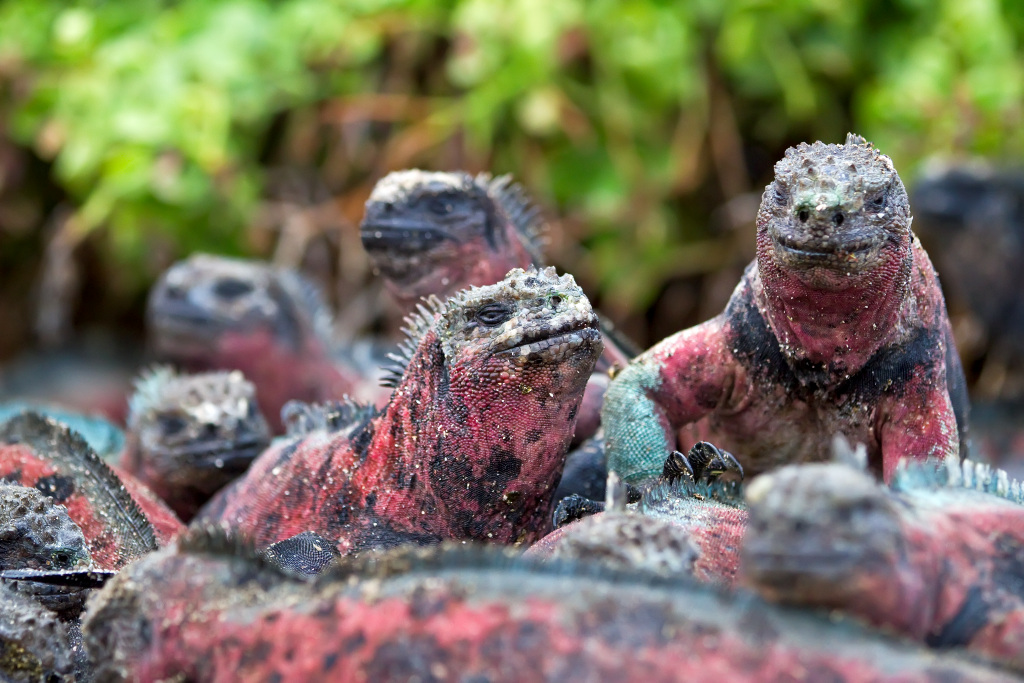

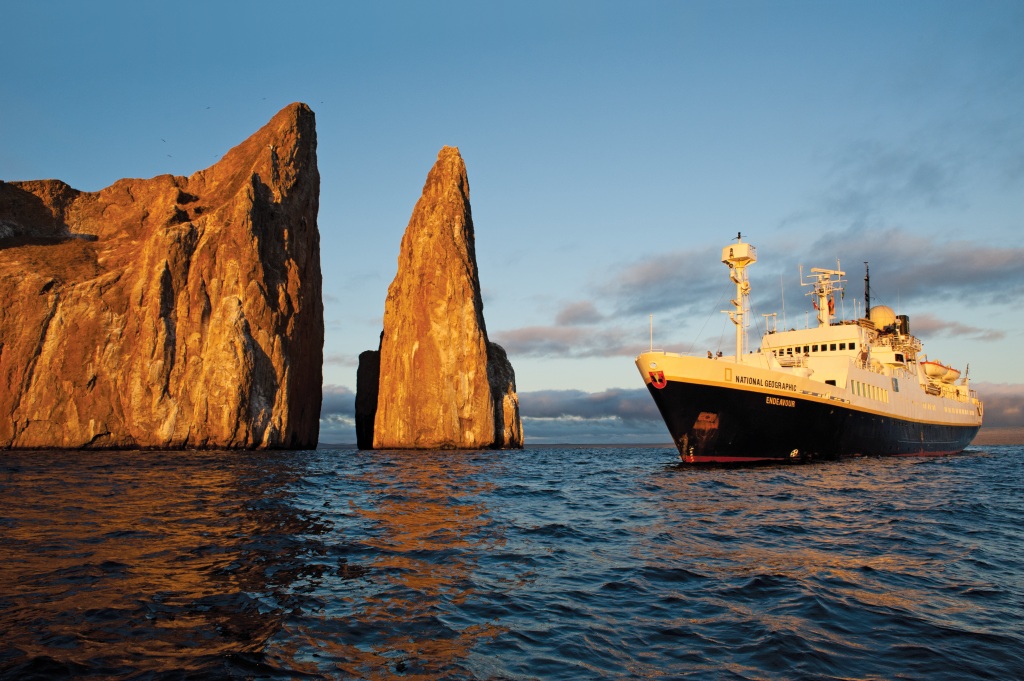

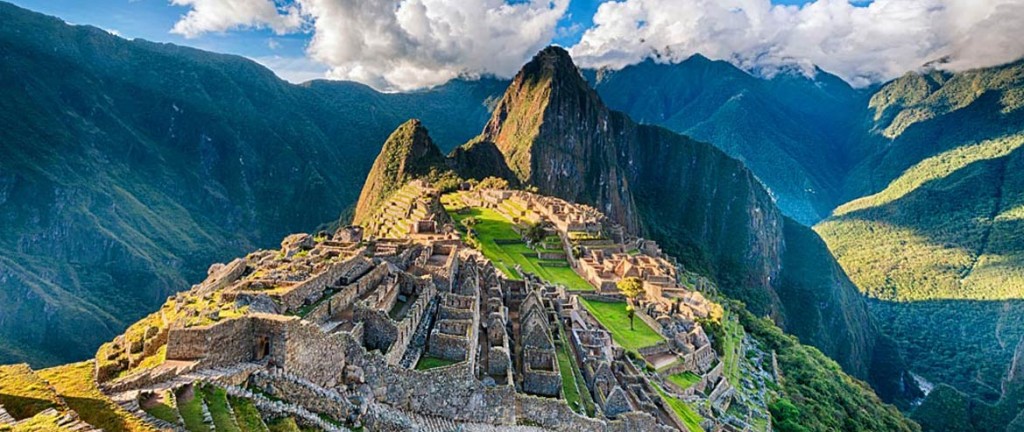
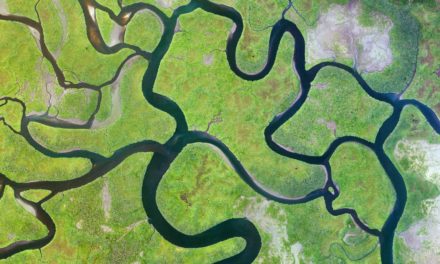

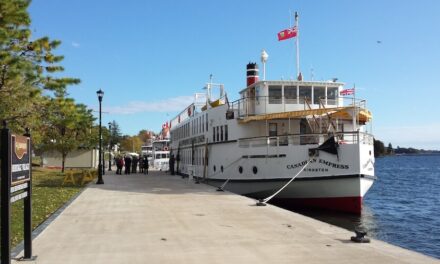
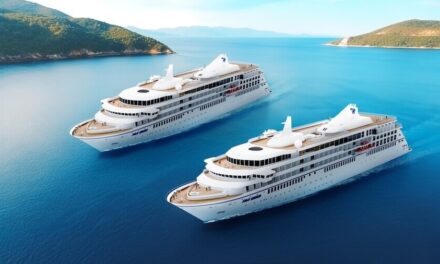
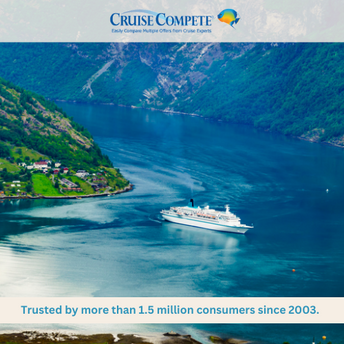



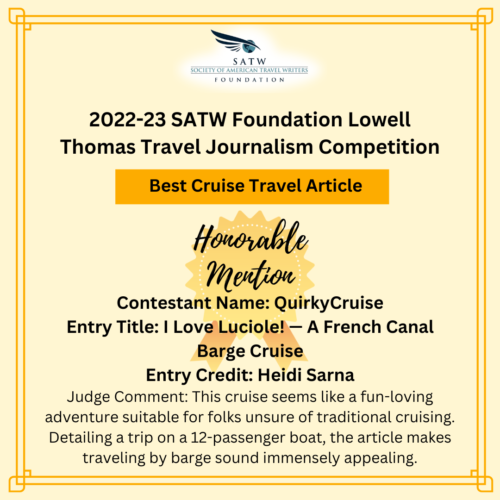
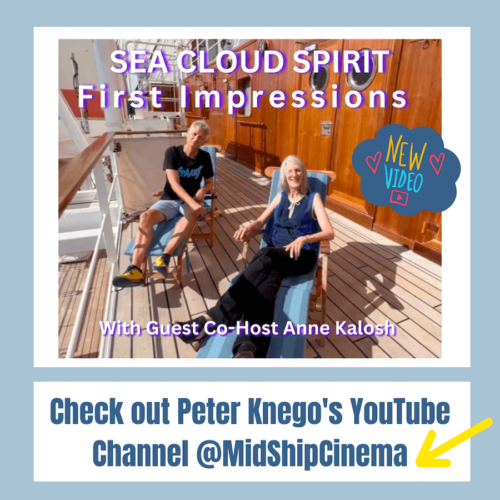


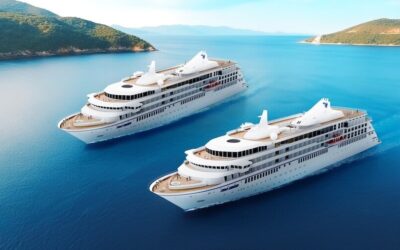

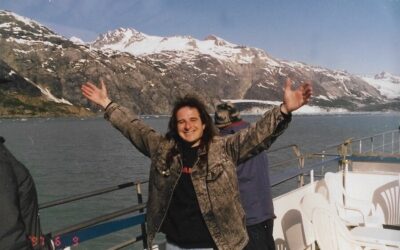
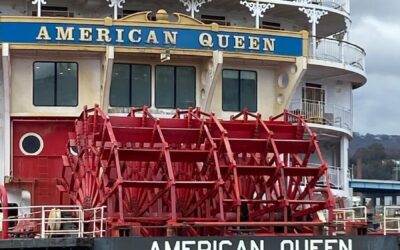
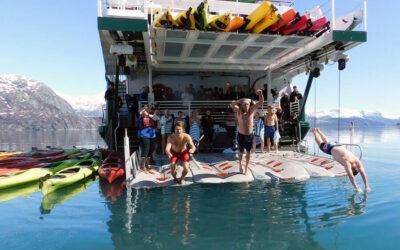
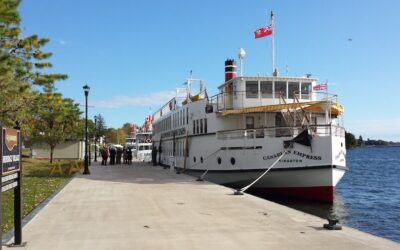
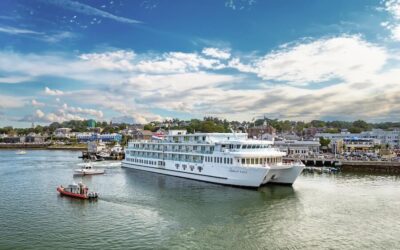

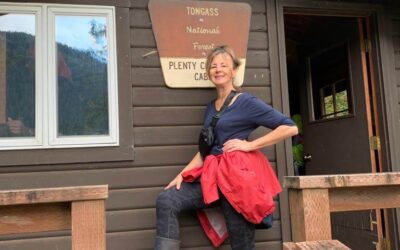
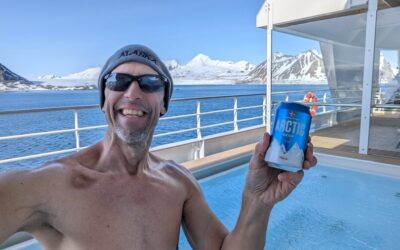
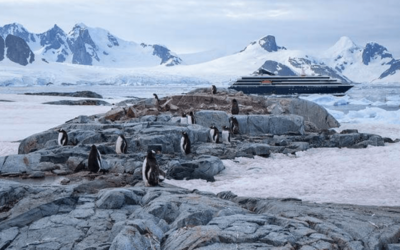

Great information on this site.